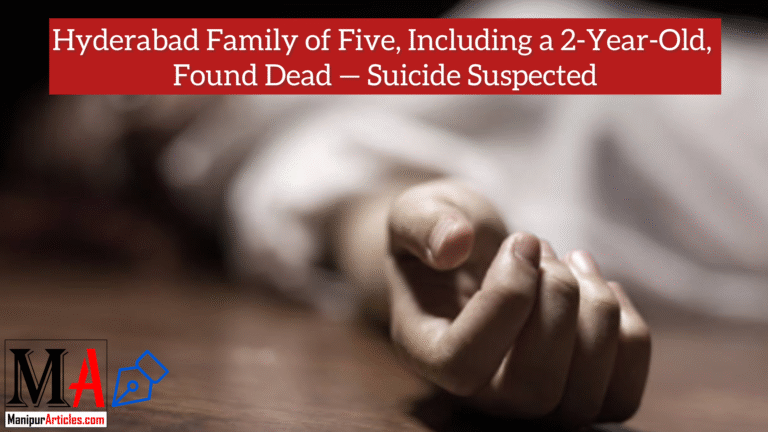EIGHT MILITANTS FROM FOUR BANNED GROUPS ARRESTED IN MANIPUR CRACKDOWN
Short Summary
In a swift and coordinated counter-insurgency operation on August 3, 2025, security forces in Manipur apprehended eight militants affiliated with four different proscribed outfits—KCP (PWG), KCP (Taibanganba), PREPAK, and KCP (Noyon)—from various locations across Imphal West, Imphal East, and Bishnupur districts. The arrests followed intelligence inputs about extortion, kidnapping, armed attacks, and threats to public institutions. Firearms, including a 9mm pistol and ammunition, were recovered, and investigations are ongoing to dismantle the militants’ networks.
Introduction: Why This Operation Matters
Hey there, curious reader! Imagine you wake up one morning to learn that your quiet town has been buzzing with whispers of clandestine meetings, extortion calls, and even shooting incidents. Scary, right? That’s precisely the unsettling backdrop against which security forces in Manipur launched a major crackdown on August 3, 2025, arresting eight militants from four dreaded insurgent groups. But why does this matter, and what does it tell us about the state of insurgency in the Northeast? Buckle up—let’s dive deep.
Setting the Scene: Manipur’s Insurgency Landscape
Manipur, nestled in India’s northeastern frontier, has a complex tapestry of ethnic identities, historical grievances, and territorial disputes. Over the decades, simmering tensions have given rise to multiple insurgent outfits, each claiming to fight for autonomy, identity preservation, or resource control. It’s a labyrinth of acronyms—KCP, PREPAK, UNLF, PLA, and more—where allegiances sometimes shift like the morning mist over the hills.
- Kanglei Communist Party (KCP): A Marxist-Leninist outfit with several factions—PWG (People’s War Group), Taibanganba, and Noyon among them. Each faction operates semi-independently, often competing for recruits and territory.
- PREPAK (People’s Revolutionary Party of Kangleipak): Advocates for an independent “Kangleipak” (ancient name for Manipur), using extortion, hit-and-run attacks, and intimidation.
The constant tug-of-war between these groups and state forces has kept the valley tense. When militants strike—or are believed to strike—it’s not just an isolated incident; it sends ripples across communities, markets, schools, and homes.
Anatomy of the Crackdown: Who, What, Where?
On that fateful day, security agencies executed simultaneous raids in Imphal West, Imphal East, and Bishnupur. Think of it as a tri-pronged pincer movement designed to catch militants off balance. Here’s a quick breakdown:
- Imphal West & Imphal East: Urban and peri-urban clusters where militants often blend with civilian populations.
- Bishnupur: A semi-rural district, perfect for underground hideouts and arms caches.
Let’s meet the detained individuals (all names changed to protect minor privacy where applicable):
- M. Premkumar Singh (28) – KCP (PWG)
- Yambem Shital Singh (39) – KCP (PWG)
- Sorokhaibam Inaoton Singh (38) – KCP (PWG)
- Khongbantabam Inaocha Devi (52) – KCP (PWG)
- Oinam Naoba Singh (18) – KCP (PWG)
- Heisnam Bobo Singh (37) – KCP (Taibanganba)
- Sorokhaibam Rohit Meitei (24) – PREPAK
- Nepram Hari Meitei (19) – KCP (Noyon)
What was seized? A 9mm pistol with magazine and cartridge—enough firepower to instill fear. But weapons are just the tip of the iceberg. These arrests come with mobile phones, documents, and leads that could unravel entire extortion rackets and arms pipelines.
Personal Stories Behind the Names
It’s easy to demonize militants as faceless adversaries. But pause for a moment. What drives a 52-year-old woman like Khongbantabam Inaocha Devi into the arms of an outlawed group? What pushes an 18-year-old like Oinam Naoba Singh to risk everything?
- Economic Hardship & Coercion: Many recruits are lured with false promises—steady money, community standing, vengeance for past wrongs.
- Ideological Appeal: Some genuinely believe these outfits can “free” their people from perceived neglect by the central government.
- Safety Nets & Social Pressures: Refusal to join might lead to threats against one’s family, creating a vicious cycle of compliance.
Understanding these personal dimensions is crucial. After all, global counter-insurgency studies tell us that hard power alone seldom suffices; you must address root causes, too.
The Modus Operandi: Extortion, Kidnapping, and More
According to the police, the arrested cadres were involved in:
- Extortion: Regular “taxes” from shopkeepers, transport unions, educational institutions, and even government projects.
- Firing Incidents: Drive-by shootings to intimidate rivals or “uncooperative” locals.
- Kidnapping: Abductions for ransom—either cash or release of imprisoned comrades.
- Illegal Arms Possession: Stockpiling firearms, grenades, and improvised explosive devices.
Picture this: You’re a small tea stall owner in Imphal East. A call comes demanding ₹50,000 “protection money.” Refuse, and rumors of a midnight raid begin to swirl. That’s the daily reality for many. And with the recent arrests, the police hope to send a clear message that the comfort zone for these criminals just shrank.
Frequently Asked Questions (FAQs)
- Q: What are the main insurgent groups operating in Manipur?
A: Key outfits include KCP (with several factions like PWG, Taibanganba, Noyon), PREPAK, UNLF, and PLA, each with varying agendas but often overlapping methods. - Q: How do security forces identify and track militants?
A: They rely on human intelligence from local informants, surveillance drones, mobile phone forensics, and coordination between state and central agencies. - Q: What legal charges do arrested militants face?
A: Charges under the Unlawful Activities (Prevention) Act, arms trafficking sections of the IPC, extortion, kidnapping, and related offenses. - Q: Why do youths join insurgent outfits in Manipur?
A: Motivations range from economic hardship and coercion to ideological beliefs and promises of social standing, compounded by lack of local opportunities. - Q: How can the government address the root causes of insurgency?
A: Through targeted development projects, youth skill-building, improved political representation, and confidence-building measures among diverse communities.




